John Hurrell – 1 June, 2024
Experiencing these planar paintings differs greatly according to viewer proximity. When seen close-up, they are not remotely the same as when seen from a distance, for then the blobs of ‘random' colour peeking out from inside the narrow dividing lines will be undetected. These linear channels of jostling varied hues (or ‘zips') are where much of the action is—alarmingly strident, brashly assertive, and avoiding optical mixing.
The eight recent Thornley paintings presented here feature cool browns (siennas and umbers), ochres, buffs and the occasional delicate blue or grey, set into vertical and horizontal rectangles butted together, with no outer frame: only painted sides. They knowingly present vague hints of Diebenkorn, early Marden, and Newman, with no diagonal edges at all occur in the compositions which are carefully divided up into tightly butted together pristine rectangles and squares. Very thin separating ‘zips’ are a crucial feature, though not always central and often multiple.
Experiencing these planar paintings differs greatly according to viewer proximity. When seen close-up, they are not remotely the same as when seen from a distance, for then the blobs of ‘random’ colour peeking out from inside the narrow dividing lines will be undetected. These linear channels of jostling varied hues (or ‘zips’) are where much of the action is—alarmingly strident, brashly assertive, and avoiding optical mixing. They are sporadically accompanied by exposed ruled biro lines. For necessary inspecting you have to hover, almost touching.
These new Thornley works are wildly distinctive because of this deliberate bleeding around the removed tape masking, calculated leaks in the border contours that allow micro-bursts of intense colour, feral underpainted blotches floating within on the heavily-textured canvas, and irregular internal streaks. As fascinating planar textured objects fixated on ratio and proportion, they also have a calculated ‘coarseness,’ avoiding super-fastidious ‘refinement’ with uber-sharp edges. There is a delicious paradox.
Inside the skinny ‘cross-sections’ that separate the rectangles and serve collectively as Newmanesque ‘zips,’ we see suggestions of exposed ‘architecture’, where it seems a wall has been sliced through. The thick line is restless, lumpy, crudely bordered, raggedly contoured. It exemplifies a controlled rawness that is often taken up to the outer edges. Vigorously rough; even shocking—but precisely applied.
The purpose of these agitated wobbly-edged vertical bands seems to be (other than functioning as dividing borders that separate partitions) to serve as foils to the planar rectangles on either side, which have on their surfaces, directional bristle marks (striations from wide brushes) that are carefully delineated within the monochromatic paint application. The (usually) tinted colour of these parallel waves of raking streaked texture has a pale powdery dryness and no oily or reflective sheen, while the tonally modulated elements very gently pulse, as do the carefully positioned blocks exploiting calibrated chromatic temperature. Occasionally there is a bleached tonal shimmering which seems determined by the projected light directed from the gallery ceiling.
Thornley’s gorgeous show is stunningly nuanced so the photos on the right are inadequate. If you admire sophisticated modernist abstraction with its highly emotional pristine geometry, beckoning tertiary colouration, unanticipated textures and wonderfully juxtaposed ratios, you absolutely need to visit.
John Hurrell
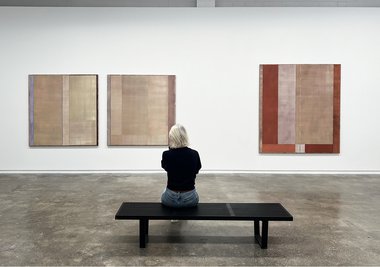
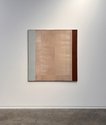
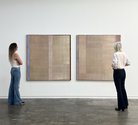


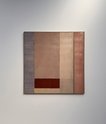
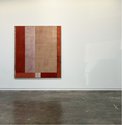
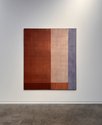
 Two Rooms presents a program of residencies and projects
Two Rooms presents a program of residencies and projects Advertising in this column
Advertising in this column



This Discussion has 0 comments.
Comment
Participate
Register to Participate.
Sign in
Sign in to an existing account.